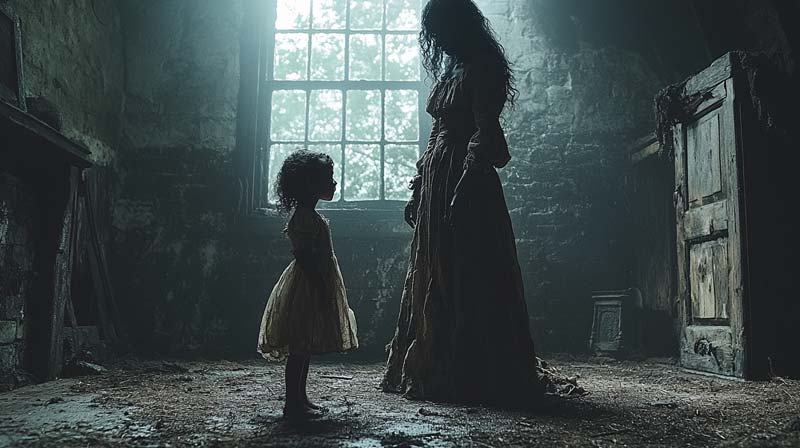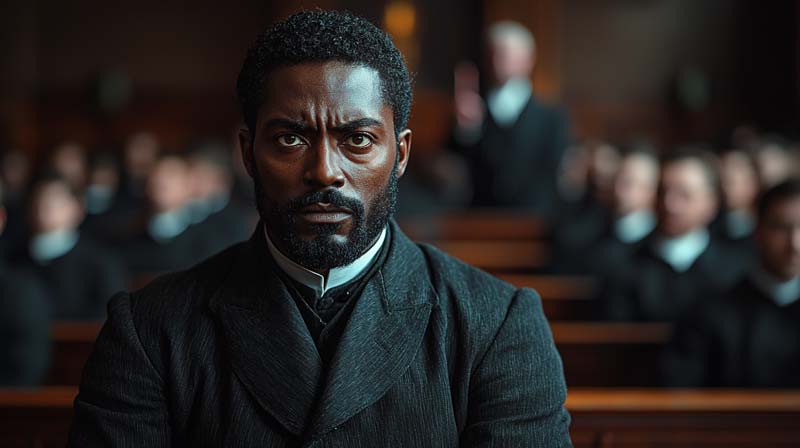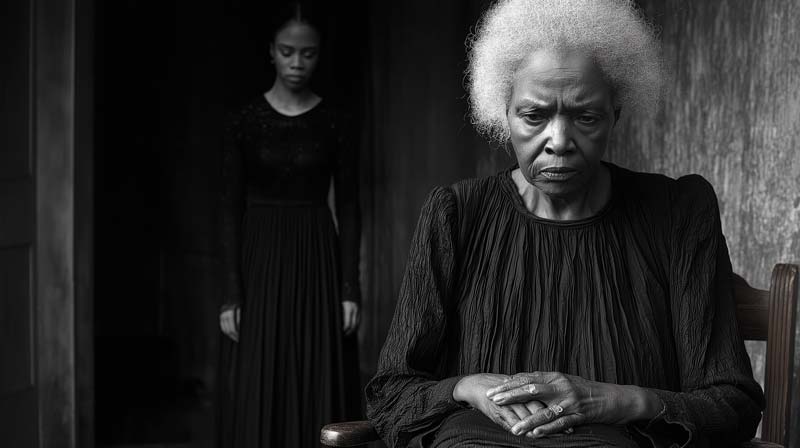Slavery’s systems continue to echo through time, shaping generations and leaving marks that refuse to fade. Even now, in October 2024, as Commonwealth leaders gather in Samoa, the weight of these historical chains prompts difficult conversations about apologies and reparations.
The Prime Minister’s assertion that “we can’t change our history” and King Charles III’s careful navigation of “the most painful aspects of our past,” nudged me as I nearly forgot my annual Black History Month UK post.
Yet perhaps there’s no better time to examine how deeply slavery’s machinery of oppression cut into the flesh and psyche of its victims. Through my previous explorations of Harriet Jacobs’s sexual abuse survival and Margaret Walker’s generational hope, I’ve uncovered various facets of slavery’s brutal reality.
Toni Morrison’s “Beloved” takes us more profound still. This Pulitzer Prize-winning novel, inspired by the true story of Margaret Garner, a runaway slave who killed her child rather than see her return to bondage, reveals the intricate and devastating systems that slavery built. Through supernatural elements and fractured timelines, Morrison exposes how these systems worked to break bodies, minds, and souls.
Set in post-Civil War Ohio, the story follows Sethe, an escaped slave haunted by the ghost of her baby daughter. This haunting becomes flesh when a mysterious young woman appears at her door. Through this framework, Morrison exposes the complex machinery of oppression that shaped not just individual lives but entire generations.
This raw examination of slavery’s impact transcends traditional storytelling, using the supernatural to expose deeply human truths. Morrison’s extensive research grounds her fiction in historical reality, creating a powerful lens through which we can examine how slavery’s systems operated—and continue to operate—on both personal and collective levels.
Toni Morrison’s Raw Truth of Generational Pain
Morrison reveals a harsh reality where past horrors manifest in the present flesh. Her novel, built on detailed research into slavery’s systems, exposes calculated patterns of destruction that shattered more than physical freedom.
Through Baby Suggs’ (gran mother) declaration that “there was no bad luck in the world but white people,” Morrison shows the deliberate nature of this oppression. This wasn’t random cruelty – it was engineered to control. White owners knew that maintaining slavery’s systems required breaking not just bodies but minds and souls.
The stark truth emerges in how slave owners viewed their human property. They listed traits “on the animal side of the paper,” reducing people to breeding stock. Men, driven to have sex with calves in their isolation, showed how these systems destroyed typical human connections and dignity.
Morrison illustrates this dehumanisation through Paul D (one of the main characters from Sethe’s past and now lover), who learns his exact worth – not just his labour value, but the precise dollar amount for his strength, heart, brain, and manhood. These systems measured human value with cold precision, breaking down each element of a person’s worth.
The damage appears most clearly in Baby Suggs’ realisation after sixty years in chains: every house in the country was “packed to its rafters with some dead Negro’s grief.” This grief wasn’t merely emotional – it was systematic, designed to ensure pain would continue through generations.
These systems worked to prevent slaves from forming lasting bonds. As Paul D reflects, the safest strategy was “to love just a little bit” – everything and everyone just enough so that when they were inevitably destroyed or taken away, you might have “a little love left over for the next one.”

Slavery’s Systems of Protection and Destruction
During slavery, mothers created intricate systems of survival while slave owners built systems of ruin. Inside Sweet Home plantation, these opposing forces played out in haunting measures, with even the most minor acts of protection drawing violent responses.
The systems utilised to control slaves relied heavily on calculated separation. Families learnt that anyone “Baby Suggs knew, let alone loved, who hadn’t run off or been hanged, got rented out, loaned out, bought up, brought back, stored up, mortgaged, won, stolen or seized.” Eight children with six fathers marked the brutal mathematics of slavery’s systems.
A mother’s desperate bid to protect often meant inflicting pain. When Sethe slashed her child’s throat rather than watch her return to bondage, she enacted the ultimate protective measure within a system designed for destruction. Her milk-filled breasts, meant to nourish her baby, became targets for the slave owner’s nephews, who “held me down and took it.”
The slave catchers operated with cold efficiency, knowing “unlike a snake or a bear, a dead nigger could not be skinned for profit.” Their pursuit methods revealed calculated patterns: checking beneath floorboards, in pantries, and even chimneys. They understood that captured slaves might seem compliant for “two or three seconds” before attempting desperate escape.
Women bore unique burdens within these systems. Ella’s (one of the girls from the plantation with Sethe) imprisonment by a father and son who “kept her locked in a room for themselves” exemplified how slavery’s machinery specifically targeted female bodies. Even reproduction became weaponised, with women considered valuable only if they could “add to the owner’s stock.”
These protective instincts didn’t fade with freedom. In Ohio, Sethe’s community remained vigilant, knowing that “whole towns wiped clean of Negroes” could happen at any moment. The dragon of racism still “swam the Ohio at will,” forcing freed slaves to maintain their defensive systems even after chains were broken.
The House That Pain Built: Memory and Haunting
Morrison’s 124 Bluestone Road mirrors countless real plantation houses where pain seeped into every board. This house, “full of a baby’s venom,” holds memories that match historical accounts of slavery’s psychological warfare against its victims.
The ghost’s presence in 124 manifests through physical disruption—mirrors shatter, kettles overturn, and handprints appear on the cake. These supernatural elements represent the genuine way trauma inhabits spaces. Two young boys (Sethe’s boys) flee at the first sign of haunting, while Baby Suggs simply accepts it, knowing more profound horrors than any spirit could present.
When Beloved materialises in the flesh, she emerges from the water with “new skin, lineless and smooth.” Her physical presence forces the house’s inhabitants to confront buried memories. Her body, like the house itself, becomes a vessel for historical pain—her questions pick at scars, and her presence demands acknowledgement of what came before.
The house’s spiteful energy shifts with slavery’s systems of torment. From broken dishes to violent outbursts, 124’s haunting mirrors the ways trauma stored itself in physical spaces. Even Paul D’s attempt to drive out the ghost only transforms it, much as slavery’s legacy adapted to new forms of oppression.
Denver’s (Sethe’s daughter) emerald closet in the woods becomes her sanctuary from the house’s memories, yet she can’t entirely escape. Her mother’s “secrets–things she wouldn’t tell; things she halfway told” live in every corner of 124, forcing each resident to pilot around unspoken horrors.
The house becomes a character, holding the weight of multiple generations’ suffering. Its walls contain Baby Suggs’ preaching, Sethe’s desperate act of protection, and the community’s judgement – each layer of memory adding to slavery’s systems of lasting psychological damage.

Slavery’s Systems of Breaking the Black Mind
The psychological destruction began long before physical violence. Slave owners understood that allowing slaves to read or write would give them power, so they kept them “ignorant” by design, ensuring they couldn’t even write their own names.
Isolation served as another mental weapon. Young women found themselves alone among predators while men worked fields in enforced silence. The system deliberately prevented communal strength, separating slaves within the same plantation.
The machinery of mental destruction showed in how slaves were forced to witness horror. Children watched mothers being stripped for auction, wives observed husbands’ humiliation, and fathers stood powerless as daughters were “taken to the room.” These forced observations served to embed helplessness into memory.
Religious manipulation added another layer to slavery’s systems. While some found solace in faith, slave owners twisted scripture to justify their actions, forcing slaves to attend white churches where preachers reinforced their supposed inferiority.
Even dreams became a dangerous territory. Hoping for better meant risking more profound pain, as the system punished any sign of aspiration. Slaves learned to suppress their own imagination – a mother couldn’t dream of keeping her children, and a father couldn’t envision freedom without fear.
The most insidious aspect of these systems appeared in how they forced slaves to participate in their own degradation. When a slave trader remarked that trading in “niggers is a bad business for a fellow that’s got any heart,” he revealed how the system corrupted even those who recognised its evil.
Women’s Bodies: The Battlefield of Survival
The female body became a primary target of slavery’s systems, with a calculated brutality that went beyond sheer violence. A mother’s breasts, meant to nourish her child, transformed into objects for torture – “They took my milk,” Sethe repeats, highlighting this violation as worse than the whipping that followed.
Pregnancy offered no protection. After reporting the theft of her milk, Sethe endured seventy-five lashes with rawhide, her back ripped open while carrying Denver. The resulting scar formed a chokecherry tree, “red and split wide open, full of sap” – a permanent mark of how slavery marked women’s flesh.
Young girls learned early that their bodies weren’t their own. “You were made for my use,” echoed the command, stripping away autonomy before adulthood. Women found themselves traded between masters, their reproductive capacity valued above their humanity. The system turned even childbirth perverse – mothers knew their babies could be sold yet were forced to keep producing them.
Ella’s story reveals the depths of this exploitation – locked in a room for more than a year by a father and son. “You couldn’t think up what them two done to me,” she says, the horror too vast for words. This wasn’t random cruelty but part of slavery’s systems for controlling women through sexual terror.
Even motherhood became weaponised. Women watched their children sold, nursed other women’s babies because their own were gone, and faced impossible choices. Some, like Sethe’s mother, could only work in the fields, seeing their children briefly – “By the time I woke up in the morning, she was in line.”
The assault on women’s bodies continued after the escape. In Ohio, free black women still feared “a gang of whites” who might “invade her daughter’s private parts.” This perpetual threat showed how slavery’s systems extended beyond the plantation, forcing mothers to remain vigilant even in freedom.
The deepest wound lay in how these violations passed through generations. Mothers couldn’t protect daughters from knowing too early about bodily danger. Even those born free inherited their mothers’ fear, carrying the weight of potential violation in their flesh. As Baby Suggs preached, the only grace lay in loving the body slavery tried to destroy – starting with your own hands, your own heart.

The Price of Love: How Trauma Travels Through Time
The greatest weapon of slavery’s systems lay in teaching slaves to limit their own hearts. “Love anything that much was dangerous,” especially children, as loss lurked constantly. This calculated attack on love ensured trauma would echo through generations.
Black families developed survival strategies that scarred their capacity for connection. Babies nursed from whatever breast was available, mothers avoided naming children too soon, and fathers learned not to show pride in their sons. Each protective measure carved new wounds into the family structure.
Even a successful escape couldn’t break these patterns. When Denver finds her sanctuary in the emerald closet, she recreates her mother’s pattern of hiding. When Paul D resists settling in one place, he carries lessons learned in chains. These weren’t choices but inherited survival tactics.
The most devastating evidence appears in how freed slaves struggled to parent. Without models of everyday family life, they fumbled through basic tasks. One mother describes not knowing how to make a baby basket or which leaves might soothe a teething child – knowledge lost through generations of separation.
Memory itself becomes a battleground. Those who remember too much risk madness, while those who forget risk repeating past horrors. Baby Suggs could only recall one detail about her firstborn – “how she loved the burned bottom of bread.” This fragment represents countless lost stories, erased by slavery’s systematic destruction of family history.
Today, as nations debate apologies and reparations, Morrison’s exploration of generational trauma gains new relevance. The systems she exposes through fiction mirror actual mechanisms that shattered families and communities. When leaders say, “We can’t change our history,” they overlook how that history actively shaped our present.
The actual cost of slavery wasn’t just in lost lives or stolen labour but in how it taught people to protect themselves by loving less. This inheritance – this careful rationing of the heart – continues to influence how communities build relationships, raise children, and imagine futures. While we cannot change the past, understanding these systems helps explain why their effects persist, demanding more than just acknowledgement but genuine reckoning with their ongoing impact.

